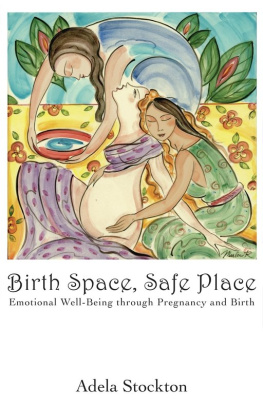Most of us would say that we want a quick and painless birth and, indeed, a quick and painless death. We are seeking to avoid rather than to transform.
We can choose to consider ourselves the victims of whatever happens to us in life, in which case we are forever at the mercy of chance events, at the mercy of accidents. We can also choose to transform what happens to us by opting for the most practical interpretation of events, practical being that interpretation which most benefits our development and inner state.
Let us say, for example, that your car breaks down, leaving you late for a meeting. You can curse your bad luck, allow yourself to become overwhelmed by stress and irritation and arrive late at your meeting. Or you can strive to accept the breakdown as the best course of events: it may have prevented you from being involved in an accident which would have been the result of continuing to travel at high speed along the motorway and arrive late at your meeting. In either case, the result is the same: you are late for your meeting. What is different, however, is your inner state.
In the former, you are a victim of circumstance and allow yourself to rage against this injustice, creating a negative state of mind. In the latter, you exercise your intelligence and ability to transform a chance accident into a positive inner state. This does not mean that we should unthinkingly try to put a positive spin on everything that happens in life, exclaiming after we have lost both hands in an accident, Hurrah, now I wont have to buy gloves any more! The point is that we have more power over how we perceive reality than we think. And this means that we have a great deal more inner freedom than we think. Our outer freedom will always be limited by the chance events that shape our life, but we can learn to maintain our inner freedom.
The aim of existence is the transformation of substances. This will occur by itself, mechanically, through the transformation of food into movement, emotion and thought. It can also occur consciously, as a result of new knowledge and the subsequent change in how we behave, what we become. If we avoid difficulties in this life, we will avoid them in the next, and lose our opportunity to transform.
If we look at the Tibetan and Egyptian books describing what happens after death, they tell us that we are faced with the task of transformation. The descriptions of the deities vary according to culture or the principles they represent, but it is the aim of the living and the dead to develop and grow. The ladder of transformation leads all the way up to heaven. And if we allow ourselves to be governed by fear, our world becomes a small prison indeed.
If we look at birth with our ordinary mind, we could say that it is unbearably painful and massively exhausting. But our ordinary mind sees only dully, coldly and puts nothing in its proper context, where it is the rightful part of a much bigger whole. So it is with birthing.
What actually happened during my births could be observed from outside as a woman in increasing pain and labour, sweating, being sick, defecating and eventually pushing out a healthy baby. But there is a whole other side to the experience that I wish to address: the inner revelation which has the potential to affect us in a way so fundamental that our lives can be transformed by it. In comparison to this, the outer, bodily experiences wither.
By taking ourselves out of our normal state, in which we experience pain as discomfort, we can experience pain differently. It is possible to become temporarily free from the experiences of our physical bodies. The physical body does its work and responds to stimuli, but we are not as attached to it as usual. The experience then becomes one of overwhelming force, rather than pain. The effort is not really effort, because we are taken out of our usual state in which we wish to avoid effort. This is possible during birth and is one of the sacred initiation experiences attainable by women.
However, our abnormal living conditions mean that this no longer happens naturally, by itself. It requires preparation.
If we remain as we are, our real self covered in the stuff we have learned since childhood about what the body is and how to relate to it if we believe that birth is painful, bloody and a necessary evil then that is what it will be. We are the product of conditioning, upbringing and education, and our experiences will be accordingly: according to what we expect.
The potential birthing experience is truly great: a time out of time when a womans body is allowed to become a vessel for forces infinitely greater than her, and the veil is lifted so that she may see, for a moment, the mysteries beyond time, death and birth. This is not something that we can just expect to happen by itself. What we can do is to prepare the body and psyche for experiencing something beyond the invisible assumptions through which our experience flows and finds its channels in the old well-worn grooves. After we have mapped what we are now and opened ourselves to possibilities beyond our social conditioning, perhaps, something new and infinitely greater may enter our world.
Three forces
In all the great religions, the number three is assigned special importance and is considered sacred. Here in the west, we are familiar with the idea of the Holy Trinity, and perhaps view it as an outmoded superstition. The significance of the number three runs deeper, however, and if we start to see the Holy Trinity as a symbolic representation of a cosmological law that has practical implications for our daily lives, it can begin to become useful to us.
Generally, we see only two: action and resistance. For example, the hedge needs cutting Im too busy. I tell my son to unload the dishwasher he tells me its his sisters turn. I want to get up early this Saturday so the whole day isnt wasted my body keeps sleeping. These examples show a state of stand-off, where nothing can happen. These opposing forces are manifestations of the active and passive principles that are a fundamental part of the make-up of the cosmos. Most of the time we go through life stuck in like dont like mode. This makes life easier and is necessary to make life run smoothly. But if we become more aware, we can begin to experience the tension between the passive and active forces in our daily lives, and see how allowing dyads to govern all aspects of our lives can be limiting.
This is important in the context of childbirth because it will help you to see beyond the dichotomy of hospital birth versus home birth, authority versus victim, mainstream versus alternative and to think more for yourself, and in so doing take more responsibility for your experience.
Triads allow us to look at phenomena in terms of three forces. If we observe carefully, we will see that a phenomenon arises when a third force is introduced, which makes things happen. To continue the above example: the hedge needs cutting Im too busy my neighbour comments on the tall hedge, which pushes me to cut it; I tell my son to unload the dishwasher he tells me its his sisters turn I set up a rota, which prevents further arguments; I want to get up early this Saturday so the whole day isnt wasted my body keeps sleeping I set the alarm clock, which jolts my body out of resistance. The third force releases the tension of the two opposing forces and allows events and manifestations to take place by the meeting of active, passive and neutralizing forces.














